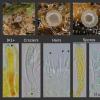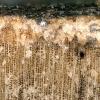
20-12-2025 23:08
Patrice TANCHAUDBonsoir, récolte sur sol sablonneux dans l'arri�

21-12-2025 09:32
Hello.A tiny ascomycete found embedded in wood in

20-12-2025 15:47
Mirek GrycHi.These grew on pine wood that was heavily covere

18-12-2025 21:17
Pol DebaenstThe identification took me to Byssonectria deformi

15-12-2025 07:09
 Danny Newman
Danny Newman
indet. Rutstroemiaceae sp. on unk. fallen leavesMc

19-12-2025 10:10
Patrice TANCHAUDBonjour, récolte réalisée en milieu dunaire, a

18-12-2025 17:23
 Bruno Coué
Bruno Coué
Bonjour,je serais heureux d'avoir votre avis sur c



Was the substate exposed, a still-attached branch? Or on the moist gorund?
The MLZ reaction of hairs and exciple is used in Huhtinen's key as a character but one must know that it is not at all shown in Lugol.

Thanks a lot for your messages!
I should have mentioned that, actually these are collections from the Suffolk (Brandon, UK). I am in Cambridge for work at the moment, that is why I do not have access to my usual microscope and reagents.
I will try my best to save some samples for further observations on rehydrated samples (still better than nothing I guess) when I am back to France.
I can confirm this was coniferous wood (picture enclosed). It was on the ground, and quite rotten already. Thanks for the tip regarding the use of Melzer vs Lugol for reaction with hairs, I was not aware of that.
I will go back there and see if I can collect older specimens to do more observations, including a more careful look at the resin and to measure hairs.
Cheers,
Edouard



